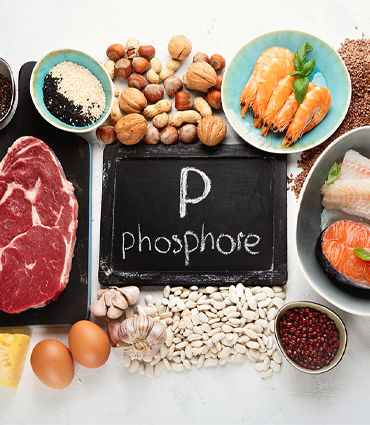
PHOSPHORUS

Description
Phosphorus is a chemical element of symbol P which was discovered in 1669 by the German alchemist Hennig Brandt.
In the human body, this trace element is found in bones and teeth, which it helps to strengthen.
Phosphorus is present in foods such as sardines, dates, wheat germ and some cheeses.
Phosphorus deficiencies can be detected by blood or urine tests.
In the blood, phosphorus concentrations should be between 31 and 37 mg/L. Below these concentrations, we speak of hypophosphatemia (phosphorus deficiency in the blood). This metabolic disorder is mainly observed in cases of rickets, vitamin D deficiency and hyperparathyroidism.
Excessive levels of phosphorus in the blood (hyperphosphatemia) have the opposite effect to that of phosphorus deficiency. Hyperphosphatemia is also found in cases of kidney failure.
The amount of phosphorus in the urine should be between 40 and 800 mg over 24 hours.
If the values are lower than normal, this is called hypophosphaturia (phosphorus deficiency in the urine). This is the case in people on a low-protein or dairy-free diet.
On the other hand, when the amount of phosphorus in the urine is higher than 800 mg over 24 hours, this is called hyperphosphaturia. This is found in people with high phosphorus diets. Hyperphosphaturia can cause bone destruction, hyperparathyroidism and vitamin D resistant familial rickets.
The benefits
Phosphorus is a trace element necessary for the solidity of bones. It is also present in the cells and participates in the proper functioning of certain enzymatic reactions.
A lack of phosphorus can be caused by a diet low in protein.
Phosphorus contributes to a normal energy metabolism.

























